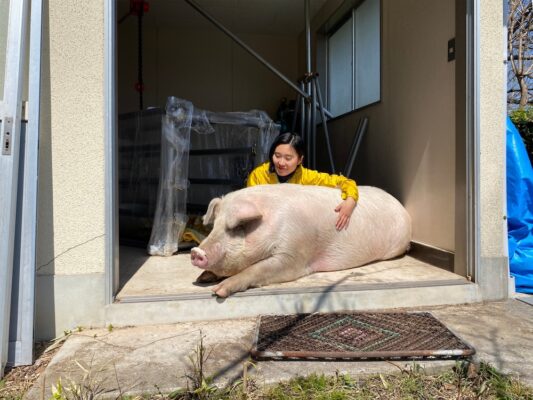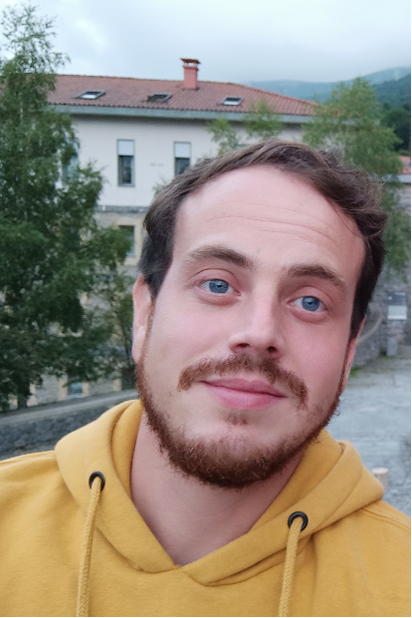Search
To search for an exact match, type the word or phrase you want in quotation marks.
A*DESK has been offering since 2002 contents about criticism and contemporary art. A*DESK has become consolidated thanks to all those who have believed in the project, all those who have followed us, debating, participating and collaborating. Many people have collaborated with A*DESK, and continue to do so. Their efforts, knowledge and belief in the project are what make it grow internationally. At A*DESK we have also generated work for over one hundred professionals in culture, from small collaborations with reviews and classes, to more prolonged and intense collaborations.
At A*DESK we believe in the need for free and universal access to culture and knowledge. We want to carry on being independent, remaining open to more ideas and opinions. If you believe in A*DESK, we need your backing to be able to continue. You can now participate in the project by supporting it. You can choose how much you want to contribute to the project.
You can decide how much you want to bring to the project.

Memento Momo is a process-based work by Ryoko Yashima (Hiroshima, 1993), expanded in time between 2019 and 2021. The project began with the insemination of a pig on a farm near her home on Momoshima Island, followed by the artist’s adoption of one of the piglets, which she brought into her own home and cared for until it reached a weight suitable to be slaughtered as human food. During this long process of raising and bonding with the animal, the artist learned the trade of butcher and obtained the license allowing her to professionally slaughter and butcher Momo, a 210-kilo animal. The project concluded with a barbecue organized by the artist, where she cooked part of Momo’s meat and sharing it with the people who helped her during the slaughter. This two-year work process was recorded through photographs and videos and the experience was compiled in a diary published in September 2024 [1] Yashima Ryoko, Memento Momo, Genki Shobou, Tokio, 2024.
How did the idea for this project come about?
When I moved to Tokyo at 18, I began to feel repulsed by meat and stopped eating it. Five years later, after moving to this remote island, 12 km in diameter, in the Seto Sea, I gradually returned to eating meat due to certain environmental limitations. At that time, I became interested in religions and was struck by the fact that both Judaism and Islam consider an animal unclean and prohibit its consumption. When I looked into why pigs were the only taboo among livestock, it seemed unclear to me. Then I remembered a trip I took to Papua New Guinea when I was 21. There, people farm the land for pigs; they are a symbol of prosperity. They raise them with care and eat them on special occasions, such as weddings or funerals, or slaughter them to atone for their sins. Pigs carry both human happiness and misfortune. I thought that if I lived with one of them, all these value structures would unravel, and I would be able to better understand the reasons that gave rise to them, as well as my relationship with animals and meat consumption.
How did this process change your life? Is it possible for an artist to separate art from life?
By learning to love Momo, I began to enjoy meat, which I used to find repulsive. I also didn’t like foods with strong odors before, but now I can eat almost anything. Spending a lot of time cleaning up large amounts of Momo’s excrement every day has changed my sense of taste, and I think it’s also helped me develop a greater respect for other foods. I believe that what we accept and reject is meaningful, and that these feelings connect directly with our instincts, which underlie all forms of human discrimination. The year I spent with Momo, whose life and death were predetermined, was fulfilling, but also difficult. I was physically exhausted, and the emotional ups and downs were very intense. All my time, money, thoughts, and actions revolved around Momo. Art cannot be separated from life, because art arises from life and life is shaped by art, in a continuous process.
The title of your work combines the Latin phrase memento mori and the name of Michael Ende’s character. How important are these two in your work?
Titling my project Memento Momo, replacing “Mori” with “Momo,” is an act of giving shape to death, to remember it. On the other hand, Ende’s protagonist, a girl named Momo, tries to reclaim the time stolen from people by the “gray men,” who are time thieves. The novel addresses issues like efficiency and productivity in capitalist society. When I started, I didn’t know whether what I was doing counted as art, but I knew that unless I followed through, I wouldn’t be able to understand the meaning of my actions. So I focused on completing my goal. If I had treated Momo like a piece of cattle, I wouldn’t have devoted so much time to her and would have immediately taken her to the slaughterhouse. However, I took good care of Momo and carry out the slaughter with my own hands. By experiencing her life and death firsthand, I think I was able to capture some of what we’ve lost by prioritizing efficiency and productivity.
How did you decide to present this project as an artwork?
I hesitated to present it as an artwork, as it seemed ethically problematic if everything were reduced to the art object itself. I didn’t sacrifice an animal to make a work. The photos, videos, and texts that emerged from my daily life with Momo, although they naturally took the form of a series of works, are simply a way of sharing the artistic experience that the entire process entailed. In fact, at first I had no idea how things would unfold There were many potential obstacles, such as Momo dying of some illness or me being unable to bear the pain and returning her to the farm. It was through caring for her health and diligently raising her that I was able to establish a direct connection with art.
What are your thoughts on the relationship between art and ethics?
Dedicating several years exclusively to this project has allowed me to approach ecology from a different perspective, as well as to question certain ethical positions and analyze the underlying legal framework. In Japan, for example, for individuals to slaughter livestock, permission from the local government is required, but it’s not easy to obtain because of the strictest hygiene regulations. In contrast, wild boar, deer, and bears can be hunted and consumed by anyone with a hunting license, which can be obtained in just two days.
During the process, I continually reflected on the artist’s responsibility. Even today, I wonder why Momo had to die. I’m aware that she died because of my actions, and I’ve suffered deeply thinking about it, but I believe that because I approached Momo’s life with the utmost responsibility, I can present this theme. People initially asked me, “Why do you treat her like a pet if you’re going to eat her in the end? Isn’t it cruel to give her love?” Then I thought about why we shouldn’t love the animals we eat. I think if you can separate all desires and conflicts from yourself, maybe you don’t need art. Having an answer to a question makes us feel better, but I think it’s important to doubt and suffer confusion. Art has the power to gently guide us toward the essence of things.
What has your experience of sacrifice contributed to your vision of ecology?
During the year leading up to the sacrifice, I was gripped by anxiety, wondering if I would be able to eat Momo. I was horrified to think that her death would be in vain. Self-sufficiency in meat is not easy. Slaughtering mature pigs at home is dangerous, and the butchering process requires considerable effort. But I believe that community-based livestock farming generates more sustainable consumption patterns, as it directly reduces consumption, as well as the waste of food and other energy sources. In industrial livestock farming, the process of raising, slaughtering, and processing meat, which was originally a single, interconnected process, is mechanically fragmented. The capitalist division of labor disconnects human feelings and imagination from a sense of responsibility.
Has this project changed your relationship with animals?
Before raising Momo, I thought humans and animals were capable of emotional connection. However, as time went on, I realized that without food I couldn’t communicate with Momo. When I reduced her food or didn’t bring her what she liked, she would get angry and even attack me. I realized that the bond between us was based purely on food, a relationship driven by mutual interests. With Momo, the lines between pet, livestock, and wild animal blurred, exposing the anthropocentric mindset underlying all these categories.
[Images courtesy of the ©︎Ryoko Yashima]
| ↑1 | Yashima Ryoko, Memento Momo, Genki Shobou, Tokio, 2024. |
|---|

Cayetano Limorte is art historian, curator and independent researcher specializing in contemporary Japanese art. He is currently working on the relationship between art, corporeality and technology.
"A desk is a dangerous place from which to watch the world" (John Le Carré)